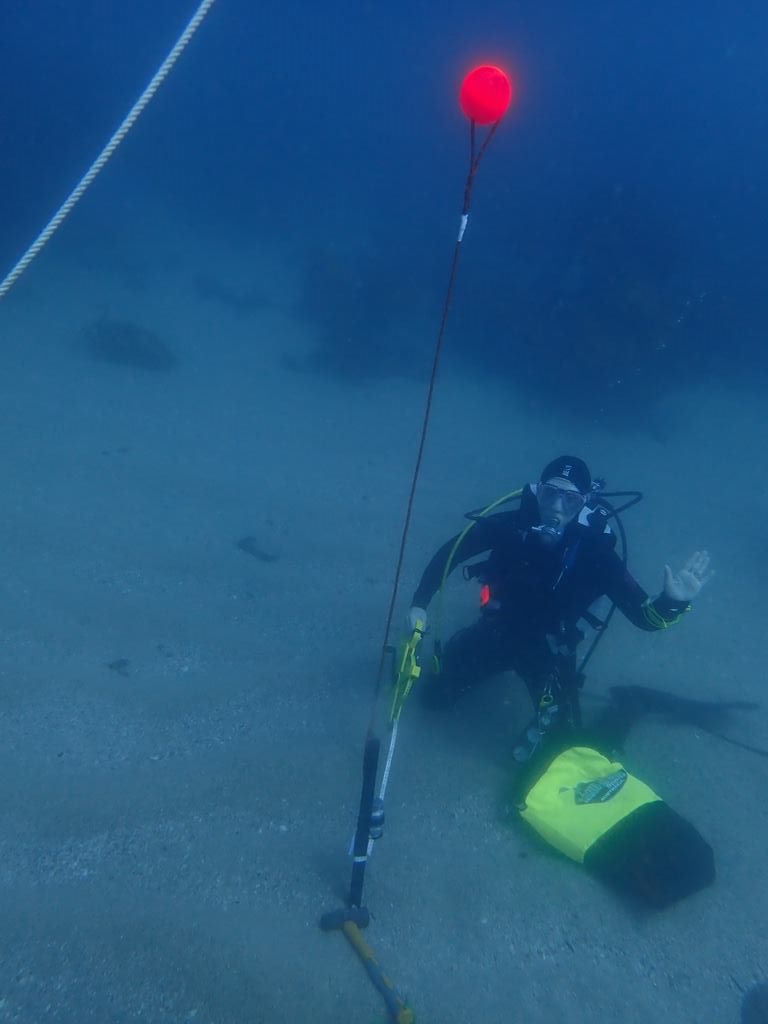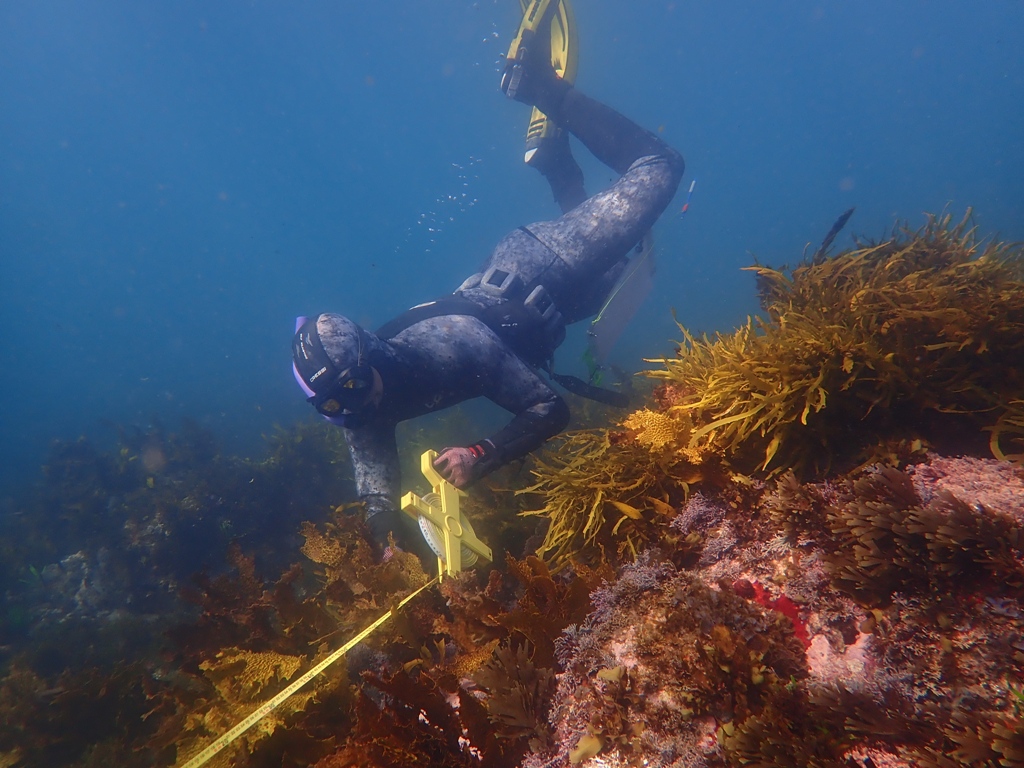
Dive deep into our kelp forest monitoring program
DPI researchers are seeking to understand how NSW’s kelp forests and rocky reef marine habitats are likely to respond to the impacts of climate change.
Submerged in the shallower waters along NSW’s rocky coastline, kelp forests are a luxurious, productive and dynamic coastal ecosystem, providing food and shelter for a variety of marine species that inhabit the rocky reefs.
The warming of sea temperatures has, however, instigated a decline in kelp forests and DPI researchers are diving deep to understand how NSW’s kelp forests and rocky reef marine habitats are likely to respond to the impacts of climate change and an increase in extreme weather events.
Underpinning scores of fisheries, kelp forests or ‘trees of the ocean’, support immense biodiversity and sequester carbon. Despite the significance of kelp in the marine environment, DPI Principal Research Scientist, Dr Melinda Coleman, explains long-term monitoring programs of underwater forests and knowledge of how they might respond to climate change, is limited.
“In order to be prepared for climate change and to be able to adapt to the impacts of climate change, we need to have an in depth understanding of how our marine life is going to respond,” she said.
Research within the Marine Estate Management Strategy Climate Change Monitoring Project focuses on filling knowledge gaps, to discover things that we don’t already know and to prepare for climate change so that we can sensibly act and do something now, rather than wait for impacts to occur.
“All the research outcomes will inform conservation, management and on-ground work such as restoration. The research will assist us to determine where we are and aren’t going to take action. In some instances, we have to embrace change and look for new opportunities in climate impacts. Where we can do something to prevent climate change impacts, we need to proactively prepare for them now.”
Plunging further below the water’s surface, Dr Coleman says it is evident the loss of kelp forests is beginning to affect a larger school of marine life, including fish, invertebrates and the plethora of other critters that live within the kelp forests.
“We’ve started to see large declines of our kelp forests in NSW, particularly around the Solitary Islands, and along the temperate coastline of Australia. Consequently, tropical species have started colonising further south, even as far south as Sydney.
“We’re also starting to see tropical fish species move further down the coast. Some species provide new fishing opportunities for fisherman but also contribute to the loss of the kelp forests, as the fish eat the kelp,” explained Dr Coleman.
Since the launch of Marine Estate Management Strategy (MEMS) Climate Change Monitoring Project in 2019, a team of scientists, DPI Fisheries compliance officers and Marine Park rangers have collectively surveyed the NSW coast between Tweed Heads and Eden to establish baseline data on the distribution of rocky reef marine habitats and associated fish assemblages. To date, 1000km of coastline has been covered.
DPI Scientific Officer in Marine Climate Change, Dr Tom Davis, is at the helm of the project and explains surveying was initially conducted by towed video and remotely operated vehicle surveys, however the time and cost benefits of towed video has proved of greater productivity.
“We initially conducted both towed video and remotely operated vehicle surveys. Towed video is quicker, taking much less time. We have now conducted more than 200 towed video surveys using underwater cameras and are conducting the surveys annually,” he said.
Further detail is also being captured by temperature loggers, installed along the coast to monitor long term temperature changes under the water, and dive surveys.
 Installing a temperature logger.
Installing a temperature logger.
We’re conducting dive surveys to collect kelp samples and look at the health of the kelp, giving us detail on what is happening in terms of reproduction, disease and growth, Dr Davis said.
“We are able to get measures on reproduction from counting the baby kelps and signs of disease, such as bleaching or fungal disease.
“New kelp recruits, the baby kelp plants, are being counted to check we’re still getting new recruits coming through. If the adult kelp is still visibly alive, there is the potential the changes in the baby kelp may not show up on the towed video monitoring,” he explained.
Click on the locations below to explore NSW's kelp forests.
With two years of baseline data collected, the research team have developed predictive modelling of the distribution of kelp forests along the NSW coast, have begun identifying areas of climate refugia for kelp and are now projecting distribution into the future.
“Using the current distribution data and predictive data of what the East Australian Current is going to do, we can model how we anticipate kelp is going to shift along the NSW coast in the future.
“We’re able to identify areas kelp is likely to persist, which is important in terms of protection.”
Stay afloat on the progress of MEMS Climate Change Monitoring Project at the NSW Marine Estate website.


